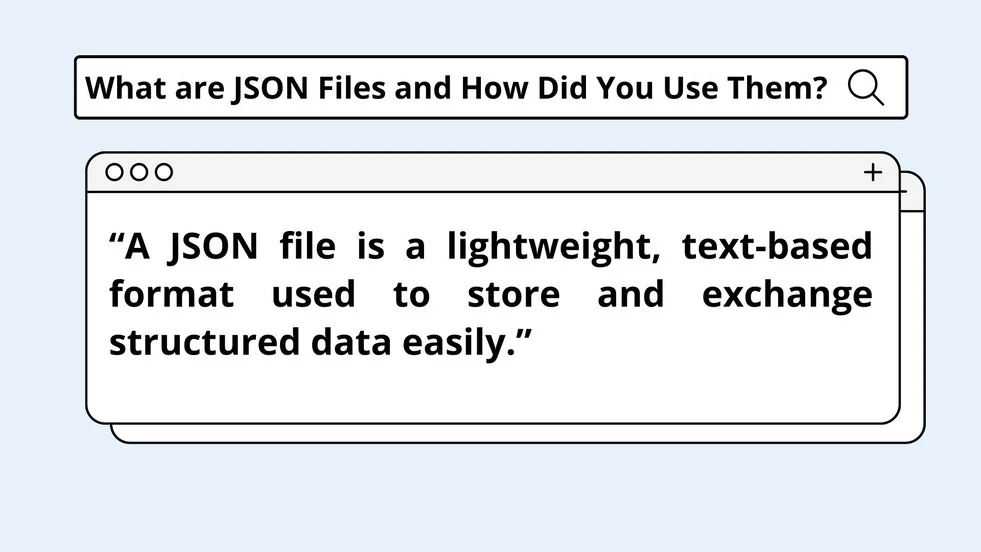What are JSON Files and How Did You Use Them?
Get Know about JSON file

In this blog we will look into
JSON Format
JSON (JavaScript Object Notation) files are a powerful tool in the world of data interchange, and understanding their significance can greatly enhance your programming capabilities. At its core, JSON is a human-readable format that allows for easy data representation and transmission between a server and a web application. Its syntax is straightforward, making it easy to parse and understand, even for those who may not have extensive programming backgrounds.
Data Interchange
One of the standout features of JSON is its language independence. This means that it can be used across various programming languages without compatibility issues. Whether you’re working with JavaScript, Python, Ruby, or any other language, you can seamlessly integrate JSON into your projects. , making it an invaluable tool for developers. This versatility not only streamlines the process of data interchange but also enhances collaboration between different teams that may be utilizing different programming environments. Moreover, JSON’s lightweight structure allows for quick data parsing and serialization, which is crucial when dealing with large datasets or real-time applications. Unlike XML, which can be verbose and complex, JSON provides a more straightforward syntax that is easier to read and write. This simplicity contributes to faster development times and fewer errors in code. Additionally, many modern APIs rely on JSON as their standard format for data exchange, further solidifying its importance in contemporary software development. By adopting JSON in your projects, you position yourself at the forefront of industry best practices, ensuring that your applications are compatible with a wide range of services and platforms. In conclusion, embracing JSON not only enhances your coding experience but also prepares you for future developments in technology where interoperability will become increasingly essential. Choosing to integrate this powerful format into your workflow is not just a smart move; it’s a necessary step towards building efficient and scalable applications in today’s dynamic digital landscape.
Lightweight data format
Moreover, JSON’s compatibility with APIs (Application Programming Interfaces) has made it the go-to format for web services. When you send requests to an API or receive responses from one, chances are high that the data will be formatted in JSON. This ease of integration not only streamlines development processes but also enhances communication between different systems. . Furthermore, because JSON is lightweight and easy to read, it significantly reduces the overhead associated with data transmission. This efficiency is particularly beneficial in environments where bandwidth may be limited or costs are a concern. Additionally, the structured nature of JSON allows for complex data hierarchies to be represented clearly, making it simpler for developers to manipulate and access nested information without extensive parsing or transformation efforts. The widespread adoption of JSON has also fostered a rich ecosystem of libraries and tools across various programming languages, enabling developers to seamlessly work with this format regardless of their technology stack. As businesses increasingly rely on diverse applications that need to interact with one another harmoniously, choosing JSON as the standard data exchange format becomes not only a practical decision but also a strategic one. By leveraging its advantages—such as simplicity, readability, and compatibility—companies can enhance their operational efficiency while laying down a solid foundation for future scalability in an ever-evolving digital landscape.